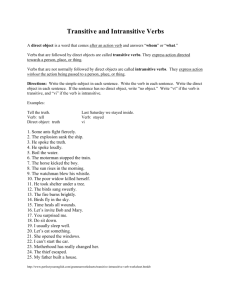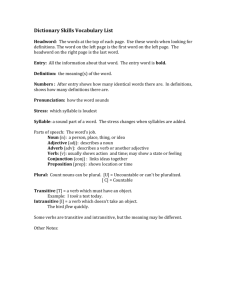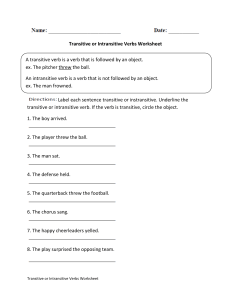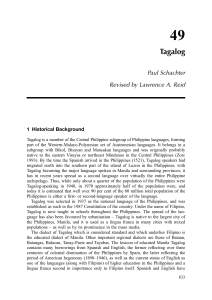Completing the Idea As stated earlier, a simple sentence must
advertisement
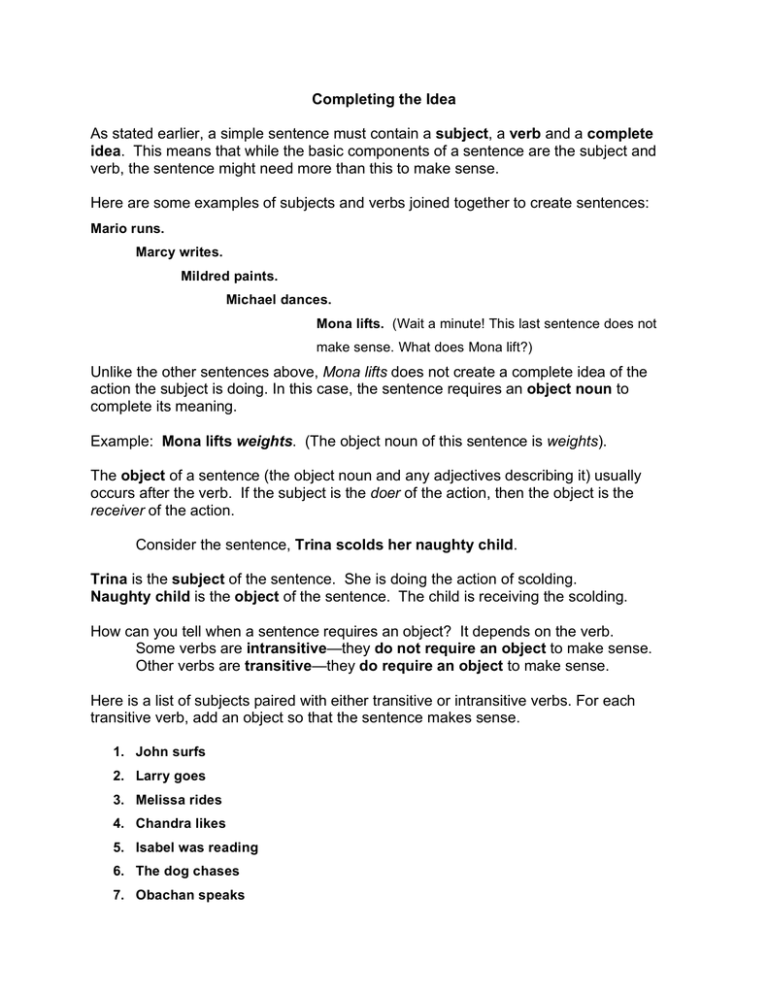
Completing the Idea As stated earlier, a simple sentence must contain a subject, a verb and a complete idea. This means that while the basic components of a sentence are the subject and verb, the sentence might need more than this to make sense. Here are some examples of subjects and verbs joined together to create sentences: Mario runs. Marcy writes. Mildred paints. Michael dances. Mona lifts. (Wait a minute! This last sentence does not make sense. What does Mona lift?) Unlike the other sentences above, Mona lifts does not create a complete idea of the action the subject is doing. In this case, the sentence requires an object noun to complete its meaning. Example: Mona lifts weights. (The object noun of this sentence is weights). The object of a sentence (the object noun and any adjectives describing it) usually occurs after the verb. If the subject is the doer of the action, then the object is the receiver of the action. Consider the sentence, Trina scolds her naughty child. Trina is the subject of the sentence. She is doing the action of scolding. Naughty child is the object of the sentence. The child is receiving the scolding. How can you tell when a sentence requires an object? It depends on the verb. Some verbs are intransitive—they do not require an object to make sense. Other verbs are transitive—they do require an object to make sense. Here is a list of subjects paired with either transitive or intransitive verbs. For each transitive verb, add an object so that the sentence makes sense. 1. John surfs 2. Larry goes 3. Melissa rides 4. Chandra likes 5. Isabel was reading 6. The dog chases 7. Obachan speaks

